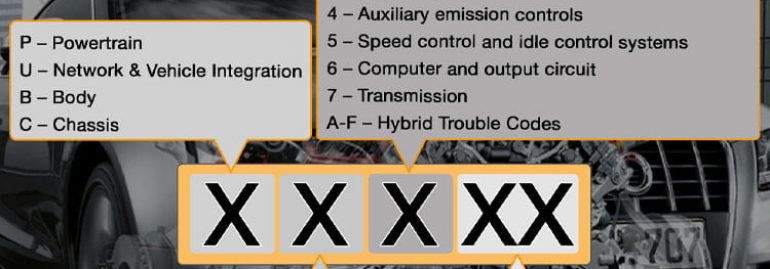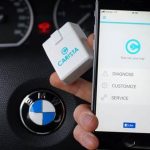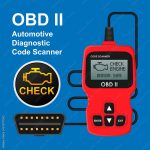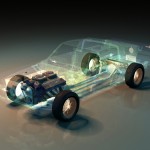Are you having trouble understanding the OBDII codes on your car? Here are the definitions of the most commonly encountered codes. You’ll learn how to read and clear them. Once you understand these codes, you’ll be able to use them to find the best car repair shop in town. In addition to helping you find a repair shop, codes for cars can help you determine the health of your car and make it safer to drive.
OBDII code meaning
If you have a car, you may be wondering what the OBDII code on your dashboard means. This troubleshooting tool displays a variety of codes for different parts of your car, including the engine and transmission. A pending code is a warning that indicates that something is wrong with the emissions control system. If it isn’t fixed, your Check Engine Light will come on. A more detailed explanation of the code is available in the owner’s manual of your car, as well as online.
The most common codes are listed below. First, the manufacturer code is followed by an SAE generic code, followed by a third number. The code itself indicates the type of malfunction, and then it specifies the cause of the failure. The second code is a warning about a problem with a system or circuit in your car. These codes are generated by the OBD II system and have many functions, such as monitoring the fuel and air ratio of your engine. They also track emissions and fuel economy. Other types of codes are related to fuel injectors, ignition, and transmission problems.
If your car has a “Pending” code, you should visit your mechanic. It means that the problem is with the transmission, and a faulty alternator may cause multiple codes. The last code, “Faulty,” indicates a malfunction with the brakes. A worn-out alternator can cause multiple codes if it has not been replaced. Fortunately, you don’t have to worry about OBD codes if you can get the help of an experienced mechanic.
The OBD system first came into existence in the early 1980s. It turned on the check engine light when a malfunction was detected. It was a challenge to diagnose a problem with a car when the codes were different from manufacturer to manufacturer, but it became easier when the OBDII specification became mandatory for all cars in 1996. These codes are formatted and communicated by the on-board computer management system.
Meaning of each code
When a car’s computer gives a trouble code, you should know the meaning of each letter and digit. These codes are produced by the onboard diagnostics (OBD) system and relate to a fault that the car is experiencing. Once you understand these codes, you will be able to diagnose problems on your own. If you are unsure what your car code means, follow the directions in your user manual or look online.
P0128: This code indicates that the temperature of the engine coolant is below the minimum temperature set by the thermostat. This code is not manufacturer specific, but is standardized and can be interpreted according to SAE definitions. P0128 indicates a problem in the fuel and air metering system. If this problem is causing your car to run poorly, contact your local dealer immediately. They will be able to diagnose the issue and recommend the appropriate repair.
The P0301 code indicates that cylinder one is not firing. This can be caused by many things, but the most common reason is a faulty spark plug. The P0305 code, on the other hand, means that cylinders two through six are not firing. Lastly, the P0316 code means that there was a misfire less than 1,000 revolutions after startup. These are just a few of the car codes you may encounter in your car’s computer.
The next time you encounter a trouble code, remember to read the manufacturer’s guidelines for its use. Make sure you check the latest list of DTCs and cross-reference the codes you see. This will ensure that you’re diagnosing the problem correctly. Otherwise, you’ll be left wondering what to replace. That’s a huge mistake that could cost you a lot of money. Instead, take the time to understand what each code means before you start troubleshooting.
Once you understand the basics of DTC codes, you can start identifying the causes of each code. The OBD2 port is found under the dashboard or steering wheel column. It can also be found in areas four through nine. Once you’ve located the OBD2 port, you’ll need to purchase a hand-held scanner that is wired to a computer. Make sure to do your research online before you buy a scanner.
How to read OBDII codes
You may have wondered how to read OBDII codes for car. If you don’t know what these codes mean, you can get your hands on a simple hand-held OBD scanner. These devices use the OBD port to diagnose vehicle problems, and can give you basic information about a car’s malfunction. There are several types of OBD codes, including trouble codes and engine error codes.
OBD-II codes are the easiest way to tell if something is wrong with your vehicle. This technology is used in vehicles made after 1996. There are two types of obd codes: type 1 and type 2. The former is the more serious and causes fast damage, while the latter is more minor and has less importance. The first code will light up the MIL after a failed drive, while the latter will produce a freeze-frame of trouble codes.
There are several types of OBD codes, and it’s important to understand which ones your car’s diagnostic tool shows. The codes are categorized according to the problem they’re supposed to indicate. The codes are usually labeled with a letter prefix and four numbers. You can use an OBD tool to find codes, as well as read explanations. If you’re unsure about any of the codes, consult your owner’s manual.
A hand-held OBD-II scanner allows you to read car OBD-II codes without a mechanic’s assistance. This handy tool is useful for any do-it-yourselfer. OBD-II codes can be a sign of a variety of problems, but the first one is usually the one that needs immediate attention. Further codes are symptoms of the first problem and will go away once the original issue has been resolved.
If you’ve been using an OBD-II code reader to diagnose your car, you’ve likely encountered the Check Engine light. The light will come on if the onboard diagnostic system has detected a malfunction. Using a scan tool, you can see the codes and diagnose any problems before they cause any more damage to your car. The codes are also an indication of the likely cause of your car’s Check Engine light to come on.
How to clear OBDII codes
Whenever you see the indicator light on your dashboard, you should act as soon as possible. In some cases, this is not always a matter of rushing to the car workshop, because it might be that the car only has a minor issue. Instead, you can use a cheap, wireless OBDII scanner to diagnose the car’s troubles. You can buy such a device for under $20, and it’ll do all the necessary things for you.
To use an OBD scanner, turn your car on so that you can connect to the diagnostic port. You can find the port under the driver’s side dashboard. Plug the scanner into the port and turn it on. The scanner will then begin to search for codes, and you can see the one that you want to clear by pressing the on/off switch on the OBD2 dongle. Make sure that you follow the instructions on the manual carefully, as there may be a manual that has different instructions.
If the check engine light comes on again after you restart the car, it may be a sign of a major problem in the car. To fix the problem, you should use an OBDII scanner to read the code. Some car models won’t reset their codes when the power is removed. If this doesn’t fix the problem, you can try removing the power source and connecting the OBD2 scanner. Using a scanner is much easier and convenient than using a manual.
To reset the OBD2 codes, you can either use a desktop application or a mobile app. Then, you need to select the option to clear the codes and acknowledge the information. Then, you can send a reset command to the car. If it is not working, you can try using a manual transmission instead. Some models will also have a backup system that will keep the settings after the power ECU has been removed.
If the check engine light stays on, you can try draining the battery. This method works similar to draining the power from a laptop. However, it won’t always be effective, and you could end up getting the engine light back on after you’ve cleared the OBD2 codes. To prevent this, you need to know what the codes mean. There are millions of error codes for OBDII vehicles, so it’s not always easy to diagnose them yourself. If you’re unsure of the problem, you can hire a professional mechanic.






